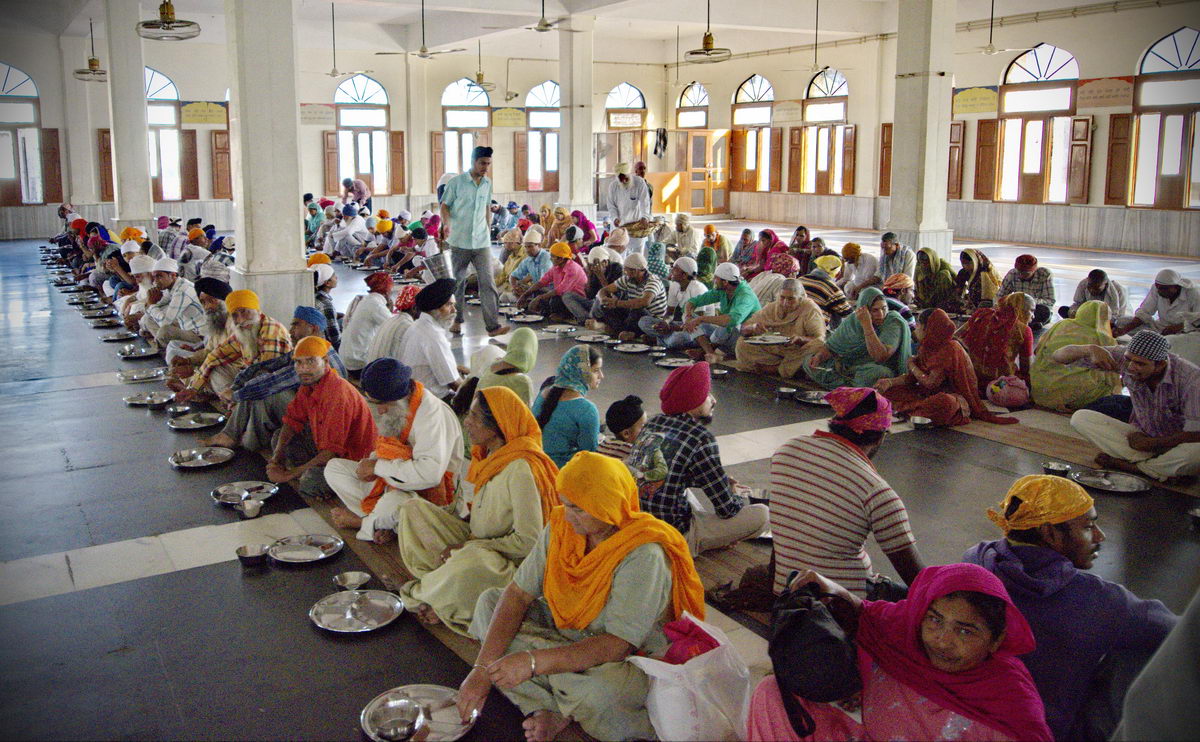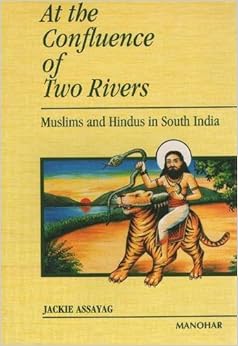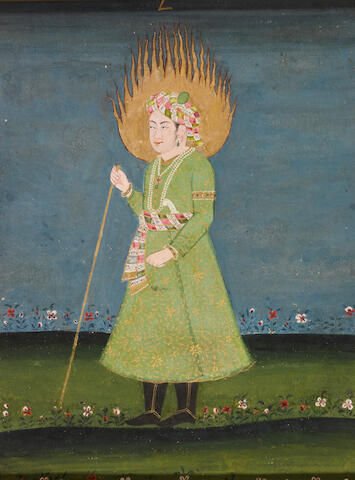Last fortnight I recounted a birthing myth about Parashuram that is rather different from the
standard story that we in Goa have come to accept as set in stone. This Dhangar
myth linked Parashuram to the goddess Yellamma, and suggested that both
Parashuram and Yellamma established familial relations with the Shia heroes,
the Imams Hassan and Hussein.
There were a couple of interesting aspects to that myth that bear underlining. The narrative suggested that when Satyava’s sons, Bhram, Apa, Asan, and Usan, returned home with two wild goats, Yellamma called out, to them “Your maternal aunt has come! My boy should sit down with you. Let your sister join your dining row!” What is interesting about this part of the narrative is not that Yellamma referenced herself as maternal aunt or sister to the men, but that she demanded a right for herself, and the child she birthed, i.e. Parashurama, to be seated along with these men.
Those familiar
with the dining habits in non-westernised parts of the subcontinent will know
that the dining line (pangath or pankti) is a central marker, not merely
of precedence, but also of familial and caste belonging. Who you eat with
defines who you are, or how important you are. For example, a caste that
considers itself superior will
not sit next to those it considers inferior in the same pangath. Similarly, those who are more important, eat before
those who are less so. Thus, the patriarch and those proximate to him eat
before the younger, and men of lesser importance, with
the women eating last of all.
 Dining in
pre-colonial South Asia, an aspect that continues in some parts even today, was
not a simple matter, but one that opened up space for ritual pollution. It was
one of those rituals through which untouchability and inequality was, and is,
perpetuated. It was for this reason that the Sikh langar (or common kitchen) stresses that everyone, regardless of
caste or class, must sit together while eating. There was to be no toleration
of caste and social difference within the Sikh community. It was also for this
reason that so much of Indian secularism hinges on going to the homes of others
and eating their food. Given that in the latter part of the nineteenth century
and early part of the twentieth century people DID NOT eat with one another,
something we consider so normal today, making people eat together, or eat the
food of the other, was critical part of the nationalist agenda. The Indian
nationalists could not imagine building a nation where people did not eat
alongside with each other.
Dining in
pre-colonial South Asia, an aspect that continues in some parts even today, was
not a simple matter, but one that opened up space for ritual pollution. It was
one of those rituals through which untouchability and inequality was, and is,
perpetuated. It was for this reason that the Sikh langar (or common kitchen) stresses that everyone, regardless of
caste or class, must sit together while eating. There was to be no toleration
of caste and social difference within the Sikh community. It was also for this
reason that so much of Indian secularism hinges on going to the homes of others
and eating their food. Given that in the latter part of the nineteenth century
and early part of the twentieth century people DID NOT eat with one another,
something we consider so normal today, making people eat together, or eat the
food of the other, was critical part of the nationalist agenda. The Indian
nationalists could not imagine building a nation where people did not eat
alongside with each other. When Yellamma
demands a space for herself, and Parashurama, in the dining line of the Shia
heroes, therefore, she makes a number of claims. First, she recognises the
validity of the Shia and Muslim men as dining partners. They are not
untouchable others and inferiors, but someone she can validly eat with. Indeed,
given the situation she found herself in, where she had been abandoned by her
sisters, and punished by Mahadev, she was the inferior and was in fact
requesting the Shia heroes to take her into their family. This equation
underlines the role that the Imams Hassan and Hussein had, and continue to
have, in the Deccan, that of the protectors of helpless women and children.
This role for the Imams, is of course a natural consequence of their position
in Shia Islam, where they are seen as defenders of justice, and partisans of
truth.
When Yellamma
demands a space for herself, and Parashurama, in the dining line of the Shia
heroes, therefore, she makes a number of claims. First, she recognises the
validity of the Shia and Muslim men as dining partners. They are not
untouchable others and inferiors, but someone she can validly eat with. Indeed,
given the situation she found herself in, where she had been abandoned by her
sisters, and punished by Mahadev, she was the inferior and was in fact
requesting the Shia heroes to take her into their family. This equation
underlines the role that the Imams Hassan and Hussein had, and continue to
have, in the Deccan, that of the protectors of helpless women and children.
This role for the Imams, is of course a natural consequence of their position
in Shia Islam, where they are seen as defenders of justice, and partisans of
truth. Also critical to
the narrative is that Yellamma and Parashurama sit down to a dinner whose main
feature is the flesh of two wild goats. Yellamma, therefore, is not above
eating with meat-eaters. She is willing to sit and eat with them, and integrate
her child into the circle of these meat-eating men. It is another matter that
she subsequently sprinkles the nectar of immortality on all the meat they had
there, and gave [the dead animals] their full life-force again. However, rather
than being read as evidence of Yellamma being vegetarian, it can be read as
stressing her divinity, and her role as life-giving mother of all (in Kannada:
Yella- everyone, Amma – mother).
Also critical to
the narrative is that Yellamma and Parashurama sit down to a dinner whose main
feature is the flesh of two wild goats. Yellamma, therefore, is not above
eating with meat-eaters. She is willing to sit and eat with them, and integrate
her child into the circle of these meat-eating men. It is another matter that
she subsequently sprinkles the nectar of immortality on all the meat they had
there, and gave [the dead animals] their full life-force again. However, rather
than being read as evidence of Yellamma being vegetarian, it can be read as
stressing her divinity, and her role as life-giving mother of all (in Kannada:
Yella- everyone, Amma – mother). This narrative
of Yellamma’s relationship with the Shia Imam’s is not the only reference to
her relationship with Muslims. She also has a curious relationship with a Sufi
saint by the name of Khwajah Bar Shah Wali, or simply Bar Shah. This
relationship has been highlighted through the work of the French anthropologist
Jackie Assayag in his work At the Confluence of Two Rivers: Muslims and Hindus in South India (2004). In this book, Assayag recounts two myths about the
establishment of the site in Saundatti as sacred. One of these tells of how the
goddess, afflicted with leprosy by her vengeful husband, the ascetic Jamadagni,
came upon Bar Shah, who took pity on her and cured her leprosy. In gratitude
Yellamma served Bar Shah faithfully for twelve years, after which the saint
granted her space to settle in Saundatti, where she had remained ever
since. As would be obvious, this myth
credits Yellamma’s location in Saundatti not to the Imams but to a Sufi saint.
Further, it brings in aspects of the brahmanical absent in the Dhangar myth. I
will deal with the brahmanical aspects of the Yellamma myths in a later column.
This narrative
of Yellamma’s relationship with the Shia Imam’s is not the only reference to
her relationship with Muslims. She also has a curious relationship with a Sufi
saint by the name of Khwajah Bar Shah Wali, or simply Bar Shah. This
relationship has been highlighted through the work of the French anthropologist
Jackie Assayag in his work At the Confluence of Two Rivers: Muslims and Hindus in South India (2004). In this book, Assayag recounts two myths about the
establishment of the site in Saundatti as sacred. One of these tells of how the
goddess, afflicted with leprosy by her vengeful husband, the ascetic Jamadagni,
came upon Bar Shah, who took pity on her and cured her leprosy. In gratitude
Yellamma served Bar Shah faithfully for twelve years, after which the saint
granted her space to settle in Saundatti, where she had remained ever
since. As would be obvious, this myth
credits Yellamma’s location in Saundatti not to the Imams but to a Sufi saint.
Further, it brings in aspects of the brahmanical absent in the Dhangar myth. I
will deal with the brahmanical aspects of the Yellamma myths in a later column. In this latter
myth, the equations of power between Islamic personages and Yellamma are
reversed, with Yellamma being the more powerful. What is important, however, is
that in the end peace is restored and the two figures live in amity. Once
again, therefore, we are presented with myths that reference the complexity of
religious life in the Deccan, and indicate that Islam, whether Shia or
otherwise, was a critical part of this life.
In this latter
myth, the equations of power between Islamic personages and Yellamma are
reversed, with Yellamma being the more powerful. What is important, however, is
that in the end peace is restored and the two figures live in amity. Once
again, therefore, we are presented with myths that reference the complexity of
religious life in the Deccan, and indicate that Islam, whether Shia or
otherwise, was a critical part of this life.
These myths are
important for those of us in Goa who are interested in non-brahmanical myths of
origin. They point to us that there is a mythical realm beyond the brahmanical
and must necessarily take into consideration that the spaces that are today
contained in Goa, were once in the shadow of the Shia Deccan. The influences of
the Shia faith still mark aspect of life in Goa, not just what we consider
Hindu, but possibly Catholic as well.
Contd...
Contd...
(A version of this post was first published in the O Heraldo on 1 May 2015)




No comments:
Post a Comment